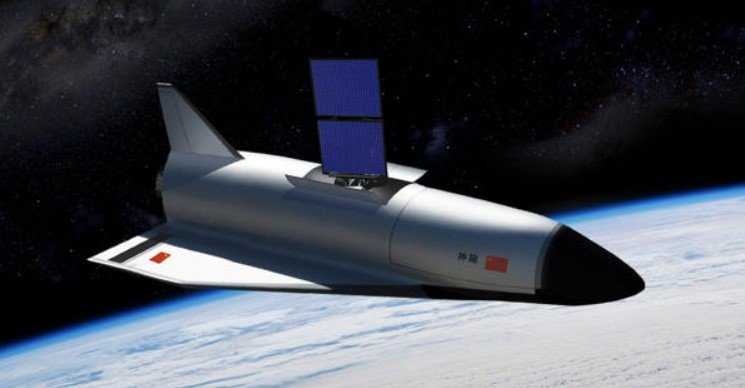China’s reusable space plane, Shenlong, commonly known as the “Divine Dragon,” has once again sparked intrigue and speculation with its latest mysterious move. Just four days after its third mission launch, the spacecraft seemingly released six unidentified objects into Earth’s orbit, playfully dubbed “mysterious wingmen” by amateur space enthusiasts. This unexpected event has left the global community puzzled, prompting questions about China’s intentions in the cosmic arena.

The Shadowy Fleet:
Despite the limited details available, initial observations suggest that the six objects are relatively small, possibly satellites or components of spacecraft. They seem to be strategically positioned around the Shenlong, forming a pattern akin to a celestial constellation. Amateur space trackers have noticed occasional emissions from some of these objects, adding an extra layer of curiosity to the unfolding mystery.
Past Precedents:
This isn’t the first time China’s space plane has introduced an element of ambiguity. In its previous two missions, the craft released single objects into orbit, triggering similar speculations about their purpose. Theories have circulated, proposing that these deployments could be test articles for practicing payload placement, service modules for the plane, or perhaps even small monitoring satellites.
Speculative Storm:
The absence of official information from China has given rise to a storm of speculation, ranging from the reasonable to the fantastical. Some experts speculate that the six objects might be part of a planned space debris removal mission, a technology demonstration project, or even the early stages of a space-based defense system. More imaginative possibilities include space resource mining or the construction of a large orbital platform.
Global Intrigue:
This mysterious episode has captured the attention of space agencies and observers worldwide. While some express concerns about potential militarization or weaponization of space, others acknowledge the potential benefits of China’s space endeavors, such as advancements in debris removal or space resource utilization.
Transparency Concerns:
The lack of transparency surrounding China’s space program continues to be a point of contention. Critics argue that this lack of openness fosters mistrust and impedes international collaboration. On the flip side, proponents argue that China, like any other nation, has the right to pursue its space goals independently.
Moving Forward:
The mystery surrounding the six “wingmen” underscores the need for increased transparency and communication in the international space arena. Open dialogue and collaborative efforts would not only alleviate anxieties but also foster innovation and cooperation in the vast expanse of space.
Future Horizons:
As China persists in pushing the boundaries of space exploration, its tendency to keep details under wraps is likely to continue. However, the potential scientific and technological advancements, if approached responsibly, could benefit humanity as a whole. Striking a balance between national ambition and global cooperation is key, ensuring that the stars above remain a shared canvas for discovery rather than a battleground for suspicion.